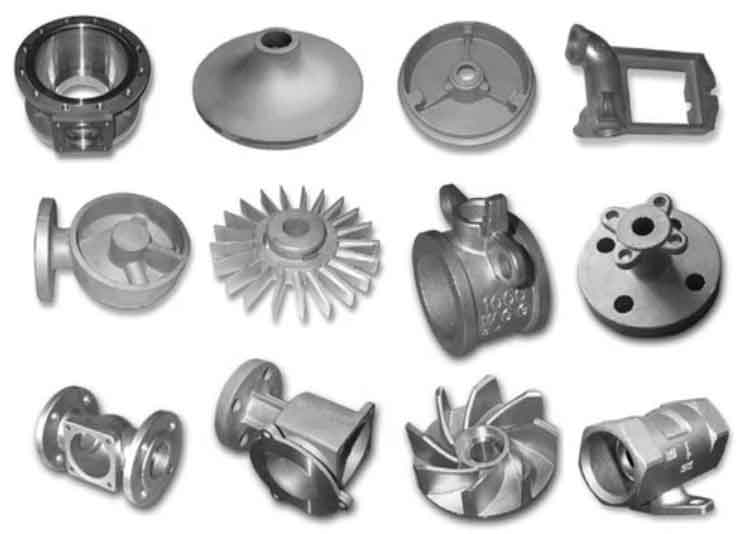Casting parts find extensive applications in various industries due to their versatility, strength, and cost-effectiveness. Here are some common applications of casting parts in engineering and manufacturing:

- Automotive Industry: Casting parts are widely used in the automotive industry for components such as engine blocks, cylinder heads, intake manifolds, transmission housings, brake calipers, and suspension components. Casting allows for complex shapes and intricate designs, making it suitable for creating automotive parts with high performance requirements.
- Aerospace Industry: Casting parts play a vital role in the aerospace industry for manufacturing components like turbine blades, engine casings, structural components, and landing gear parts. Casting enables the production of lightweight, high-strength parts that meet the stringent requirements of the aerospace sector.
- Energy Sector: Casting parts are employed in the energy sector for applications such as wind turbine components, turbine housings, valve bodies, and heat exchanger components. The ability to create large, complex shapes makes casting an ideal choice for energy-related equipment.
- Heavy Machinery and Equipment: Casting parts are used in heavy machinery and equipment, including construction machinery, agricultural machinery, mining equipment, and industrial machinery. Components such as gearboxes, housings, brackets, and pulleys are commonly manufactured through casting.
- Pumps and Valves: Casting is widely utilized in the production of pump and valve components. Pump casings, impellers, valve bodies, and valve handles are examples of casting parts used in fluid control systems.
- Railway Industry: Casting parts are utilized in the railway industry for manufacturing components like brake systems, wheel hubs, couplings, and bogie frames. Casting enables the production of robust and durable parts that can withstand the demanding conditions of the railway environment.
- Medical Equipment: Casting is employed in the production of various medical equipment components, including orthopedic implants, prosthetics, surgical instruments, and X-ray machine components. Casting allows for the production of intricate and customized parts that meet the specific needs of medical applications.
- Pipes and Fittings: Casting is utilized for manufacturing pipes, pipe fittings, and connectors used in plumbing, HVAC systems, and industrial piping networks. Casting provides the flexibility to produce components of different sizes and shapes, catering to diverse plumbing and piping requirements.
- Marine Industry: Casting parts are used in the marine industry for manufacturing components like propellers, ship engine components, and boat fittings. Casting allows for the production of corrosion-resistant and seawater-resistant parts suitable for marine environments.
- Architectural and Decorative Applications: Casting is employed for creating architectural and decorative elements such as ornamental metalwork, statues, sculptures, and artistic pieces. Casting allows for intricate detailing and the replication of complex designs.
These are just a few examples of the wide range of applications for casting parts in engineering and manufacturing. The ability to produce complex shapes, achieve desired material properties, and cost-effectively manufacture components makes casting a preferred choice across industries.
